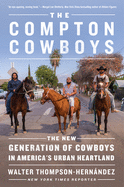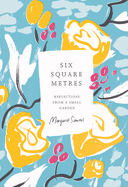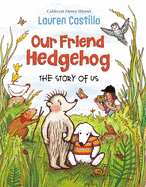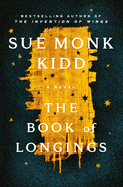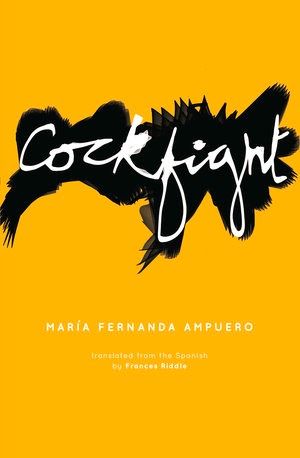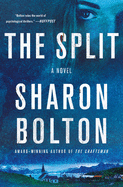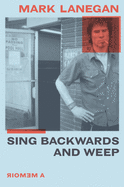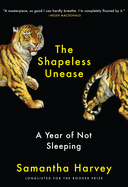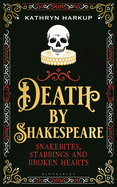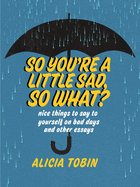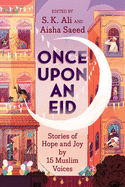Friday, May 15, 2020
Last week, Stephen King told Stephen Colbert that The Shining's Jack Torrance was a character he wouldn't want to be quarantined with right now. Seems reasonable.
In olden (pre-Covid-19) times, I spent about 30 days per year in hotel rooms, but I'm unlikely to do so again for a while. Hotels have never been so vacant, which is scary on many levels and has prompted thoughts of great hotel reads and empty rooms (except, of course, for the ghosts).
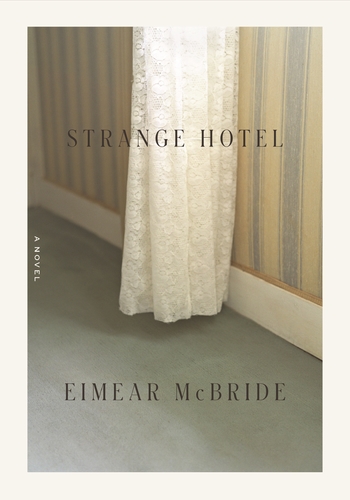 I recently booked a few days in Eimear McBride's brilliant novel Strange Hotel (FSG), offering amenities like this: "Which begs the question then, does she think of her life in these hotel rooms as laboratorially contained? Clearly the answer is yes, she has thought of it in this way. Each experience and experiment brought to culmination, data stripped, then labelled a failure or success. Is that really true? The answer is really yes: anthill--hotel rooms, ants as men. On reflection she can't deny the similarities between these games and their, oh so conscientiously maintained, absences of conquest."
I recently booked a few days in Eimear McBride's brilliant novel Strange Hotel (FSG), offering amenities like this: "Which begs the question then, does she think of her life in these hotel rooms as laboratorially contained? Clearly the answer is yes, she has thought of it in this way. Each experience and experiment brought to culmination, data stripped, then labelled a failure or success. Is that really true? The answer is really yes: anthill--hotel rooms, ants as men. On reflection she can't deny the similarities between these games and their, oh so conscientiously maintained, absences of conquest."
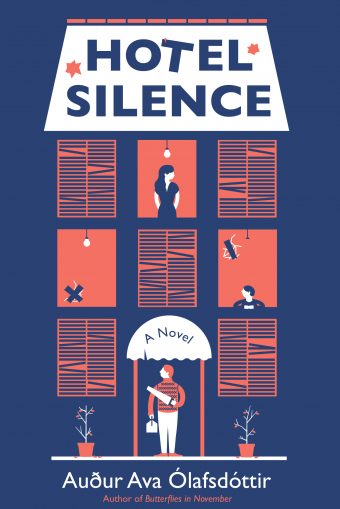 I've also stayed in the beautifully surreal Hotel Silence by Audur Ava Ólafsdóttir, translated by Brian FitzGibbon (Grove Press/Black Cat), where Jónas observes: "Sleeping pills also feature as a way of enabling people to sleep longer than usual in hotel rooms, for eternity you might say."
I've also stayed in the beautifully surreal Hotel Silence by Audur Ava Ólafsdóttir, translated by Brian FitzGibbon (Grove Press/Black Cat), where Jónas observes: "Sleeping pills also feature as a way of enabling people to sleep longer than usual in hotel rooms, for eternity you might say."
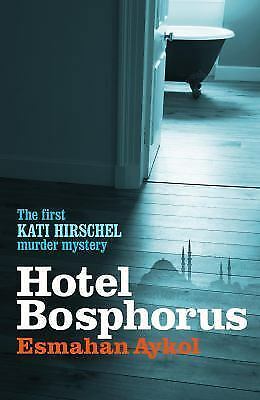 And a great time was had in Hotel Bosphorus by Esmahan Aykol, translated by Ruth Whitehouse (Bitter Lemon Press), where the intrepid Istanbul bookseller Katie Hirschel investigates a murder in "a suite with a magnificent view. It was almost larger than my apartment.... Can a hotel room make a person happy? Well, this one could."
And a great time was had in Hotel Bosphorus by Esmahan Aykol, translated by Ruth Whitehouse (Bitter Lemon Press), where the intrepid Istanbul bookseller Katie Hirschel investigates a murder in "a suite with a magnificent view. It was almost larger than my apartment.... Can a hotel room make a person happy? Well, this one could."
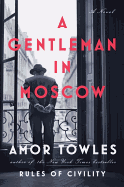 Ultimately, however, I suspect I'm more like Count Rostov in Amor Towles's wonderful A Gentleman in Moscow. Exiled to the Metropol Hotel's attic, he adapts: "Thus, within an hour he had reduced his room to its essentials: a desk and chair, a bed and bedside table, a high-back chair for guests, and a ten-foot passage just wide enough for a gentleman to circumambulate in reflection." --Robert Gray, contributing editor
Ultimately, however, I suspect I'm more like Count Rostov in Amor Towles's wonderful A Gentleman in Moscow. Exiled to the Metropol Hotel's attic, he adapts: "Thus, within an hour he had reduced his room to its essentials: a desk and chair, a bed and bedside table, a high-back chair for guests, and a ten-foot passage just wide enough for a gentleman to circumambulate in reflection." --Robert Gray, contributing editor
The Book of Longings
by Sue Monk Kidd
Sue Monk Kidd imagines that Jesus Christ had a wife, Ana, and The Book of Longings is her story. Ana doesn't appear in history, but provides illuminating context for the historical life and death of Jesus of Nazareth. Ana's chronicle is striking and woman-centered, as she declares, "I am Ana.... I am a voice."
Before she marries Jesus, Ana lives with her Jewish family in Sepphoris. Their wealth and literacy are rare; joining a poor family introduces the harsh realities of life under Roman rule. Jesus, who "put compassion above holiness," pictures God as a forgiving father rather than as a vengeful deity. Ana realizes that "God could be love, as Jesus believed." Jesus' preaching takes him away for months at a time. His absences allow Ana to maintain an independence that other women don't have. Her writing and meditation lead her to wonder, "What if my words could, like men's, prophesy or preach?" Ana's longing for agency is as passionate as Jesus' desire for a relationship with God, and as he faces crucifixion, she vows to be with him, saying, "I would go with him to the end of his longings."
Monk Kidd (The Invention of Wings) mixes historical and fictional characters, giving an engrossing portrayal of life during the Christian New Testament era. Christians and non-Christians alike will appreciate the well-developed characters and carefully researched settings. For fans of Anita Diamant's The Red Tent and Geraldine Brooks's The Secret Chord, here is an audacious and original historical fiction. --Cindy Pauldine, bookseller, the river's end bookstore, Oswego, N.Y.
Discover: Ana, fictional wife of Jesus Christ, longs to chronicle women's stories even as she bears witness to her husband's desire for radical change.
Cockfight
by María Fernanda Ampuero, transl. by Frances Riddle
In her scarifying fiction debut, translated by Frances Riddle, Ecuadorian writer and journalist María Fernanda Ampuero offers a baker's dozen stories that stab at the heart of the very idea of domestic tranquility. Fierce and tender, pained and vicious, Ampuero's miniatures focus on women facing violence and exploitation, as her (mostly) young protagonists survive abusive fathers, brothers and neighbors, well-organized sex traffickers, armies of cockroaches and other pervasive threats of violence that might gut their lives open at any time.
"I say yes because I've always said yes to men," one narrator says, after performing for an abuser's pleasure in the most squalid of settings. That declaration suggests this lean collection's prevailing tone of dazed resignation in the face of everyday terrors, but Ampuero's most memorable stories edge toward a bravura horror reminiscent of the most brutal work of Joyce Carol Oates. The opener, "Auction," in which a girl discovers men stop touching her when she's covered in the guts of gamecocks, stands as a sort of mission statement about the feminist uses of gore, and several other stories are pointedly splashed in menstrual blood. (Plus: creepy twins and copious incest!) Most of Cockfight's voices come from Ecuador's poor, but Ampuero sets two stories--one told by an international tourist watching workers bleach a resort swimming pool, the other by a wealthy woman whose friends get drunk and try on the maid's clothes--on the other side of the class divide. They're caught in sick cycles, too. --Alan Scherstuhl, freelance writer and editor
Discover: These blood-soaked stories from Ecuador are a cry of feminist rage.
The Big Finish
by Brooke Fossey
Brooke Fossey's cleverly conceived, charming first novel, The Big Finish, centers on gruff and feisty 88-year-old Duffy Sinclair--a never-married Vietnam vet and recovering alcoholic. He believes his days are numbered while in residence at Centennial, an assisted living community in Everton, Tex. Duffy is fun and spirited. He jokes with the nurses, complains to the dining hall cook, riles the facility manager and flirts endlessly with an attractive female resident. Duffy and his staid best friend and roommate, Carl Upton, are still able-bodied and intellectually sound. But Duffy worries, if he doesn't toe the line or if he loses mobility, he'll be moved to Simmons, a dreadful nursing home for the aged, to live out his last days. Duffy's fears soon fall by the wayside, however, replaced by bigger ones, when Carl's granddaughter, Josie--a reckless 20-something whom Duffy never knew existed--breaks into their room through a window, seeking refuge. Her mother, the daughter of Carl's former mistress, has died, and Josie, in trouble, has fled an abusive boyfriend.
What ensues is an often madcap yet deeply poignant story. Josie's predicament and presence (Duffy and Carl secretly harbor her at the assisted living community) rallies Duffy's empathy and affections, forcing him to re-examine his life and take stock of--and perhaps even alter--his destiny.
Fossey delivers a funny, adventurous novel about second chances, redemption and how, just when it might seem as though life is winding down, it's actually just getting started. --Kathleen Gerard, blogger at Reading Between the Lines
Discover: In this adventurous, poignant novel, a feisty 88-year-old comes to the rescue of his roommate's troubled granddaughter.
Mystery & Thriller
The Split
by Sharon Bolton
Sharon Bolton (The Craftsman; Dead Woman Walking) often opens her thrillers with a scene that makes it hard to stop reading, and The Split is no different. Glaciologist Felicity Lloyd is stationed on the remote Antarctic island of South Georgia to study the decline of ice, but she's also hiding from a violent man, Freddie, who will literally go to the ends of the earth to find her. The island's tourist season is wrapping up but there's one more boat due to arrive--and Freddie's name is on the passenger list. Felicity packs emergency supplies and goes on the run, in a brutal environment that could kill her before Freddie gets to her.
Back in Cambridge, England, where Felicity is from, her former therapist, Joe, discovers shocking information about Freddie and races to South Georgia also to search for Felicity, before someone ends up dead.
One of Bolton's signatures is setting her story in a distinctive environment, and South Georgia's glaciers, subzero winds and frigid waters become menacing characters, ones without logic or compassion, always threatening to kill at a moment's notice. Bolton's descriptions of setting and people are equally vivid: "A tear zigzags down the elderly woman's cheek. Her face is so wrinkled it can't flow in a vertical line." Felicity is another of Bolton's resourceful heroines, even while suffering from blackouts and memory loss. Some plot twists are predictable--the title is a giveaway--but Bolton's tight pacing and complex characters will take readers on a riveting adventure across a landscape as breathtaking as it is deadly. --Elyse Dinh-McCrillis, blogger at Pop Culture Nerd
Discover: A glaciologist is hunted by a killer on a remote Antarctic island in this chilling psychological thriller.
Biography & Memoir
The Compton Cowboys: The New Generation of Cowboys in America's Urban Heartland
by Walter Thompson-Hernández
"Streets raised us. Horses saved us." Growing up in Southeast Los Angeles, Walter Thompson-Hernández wondered why there were no black cowboys. Then one day in Compton, he saw a show-stopping group of black horsemen riding down the street. "The cowboys had an allure to them that went beyond words. They seemed ethereal--like superheroes on the backs of mystic creatures who, I imagined, communicated in a language unknown to me."
Now a reporter for the New York Times, Thompson-Hernández reached out to the present-day Compton Cowboys. Many have ridden together since the 1990s and all started in the Compton Jr. Posse. Founded in the 1980s, the nonprofit was formed to provide at-risk youth an alternative to drugs and gangs, teaching them to care for themselves through caring for horses.
In The Compton Cowboys, Thompson-Hernández traces the roots of Compton, the organization and its members, providing heartrending insight into their varying paths to the Posse. They continue to challenge stereotypes and ride with "a free and rebellious spirit." While carrying the legacy of Compton's black cowboys, there is an effort to make the Cowboy culture accessible and cool--designer clothes, Air Jordans--and allow the armor that keeps them safe within their present realities. "Being black cowboys was as much about having a community where you could be your unapologetic self as it was about riding." Compelling and transforming, The Compton Cowboys is a story of history, race, tradition and pride, given life by Thompson-Hernández's insight and care. --Lauren O'Brien of Malcolm Avenue Review
Discover: Black cowboys merge tradition and current culture to save at-risk youth in a city with one of the highest death-by-gun rates in the country.
Sing Backwards and Weep: A Memoir
by Mark Lanegan
Sing Backwards and Weep, Mark Lanegan's no-holds-barred, untidy but unforgettable recollection of his years in the burgeoning Seattle grunge scene, opens as he is about to be arrested. In Lanegan's pocket are bags of dope and coke. On the curb beside him, two acquaintances are already in handcuffs.
Suddenly: "The cop narrowed his eyes, took a hard look at me, then said, 'Didn't you used to be a singer?' " Indeed--and one autograph later, the motley crew gets off without penalty.
Such breaks have long "blessed" Lanegan, whose life in music has been punctuated by battles with addiction that he has managed to survive. A longtime songwriter, he achieved renown both on his own and with Screaming Trees and Queens of the Stone Age. His debut memoir covers the mid-1980s to early 2000s, while he was making music with Screaming Trees and beginning his solo career alongside bands like Alice in Chains, Pearl Jam and Soundgarden.
On tour and at home, Lanegan's tempestuous relationships and battles with addiction form consistent barriers to his success. His recounting is warts (plus fiberglass slivers embedded in intimate places) and all, and what could read as name-dropping actually doesn't, given his longtime proximity to rock stars: Kurt Cobain, for instance, was a fan of Lanegan and eventually a close friend.
While some stories can feel braggadocious or score-settling, they're almost always still engrossing. Lanegan is a consummate lead singer: talented, engaging, brash and center stage in every moment. Fans will eat it up. --Katie Weed, freelance writer and reviewer
Discover: Relive the Seattle grunge rock heyday that frontman-cum-junkie Mark Lanegan barely survived in this sometimes haphazard, but always gripping, memoir.
The Shapeless Unease: A Year of Not Sleeping
by Samantha Harvey
Sleep won't be much of an option when pondering the questions and images novelist Samantha Harvey raises in her profound, earthshaking memoir, The Shapeless Unease: A Year of Not Sleeping.
Harvey (The Western Wind) is a writer of both sparkling effusions and dark, twisted inquiry. The Shapeless Unease defies linear genre and offers a varied look at the somber affliction of insomnia. In 2016, Harvey couldn't sleep. She talked to her doctor, tried various remedies, but all to no avail. She captures her experience of that year in stream-of-consciousness interior monologues and more essay-like probing into the heart of her distress. She's a shapeshifter, in that the point-of-view changes constantly. She writes in first-person then shifts to third-person. Some of her passages are short stories she wrote during that time. Some are dialogues with people trying to help. What's constant is the restless energy propelling the prose: fervent, searching, luminous at times.
The best part of The Shapeless Unease, though, is the author's exploration of writing. The act of writing saves her in the night, and she delves into what constitutes the miraculous phenomenon known as the written word. "Writing is dreaming," she explains. "It is lucid dreaming--the work of the subconscious that has a toe in the conscious, just enough to harness the dream's waywardness." This memoir churns in the soul. Here is a talented writer plumbing her personal experience as deeply as she can. The results are staggeringly beautiful. The Shapeless Unease belongs on the nightstand of every literary-minded insomniac. --Scott Neuffer, writer, poet, editor of trampset
Discover: An accomplished novelist grapples with her insomnia and life's biggest questions in this brilliant, genre-bending memoir.
Gardening
Six Square Metres: Reflections from a Small Garden
by Margaret Simons
Gardeners, the saying goes, reap what they sow. But Australian journalist Margaret Simons isn't so sure. "What about," she argues, "all the things you sow that don't germinate?" What about "opportunistic weeds" and the occasional glorious, unlooked-for surprise? In her memoir Six Square Metres, Simons (Penny Wong) shares wry, often contrarian reflections on her years of tending a tiny urban plot in Melbourne, battling slugs, shade and burger wrappers from the McDonald's next door.
Simons is candid about her gardening frustrations: plants are vulnerable not only to wind, drought and wildfire, but sometimes refuse to grow no matter how much she coaxes them. On the other hand, summer zucchini will double in size (and become barely edible) if left unwatched for a day. Nevertheless, Simons persists, growing eggplants on the roof, a "Happy Wanderer" vine on her back fence and hardy daffodils in red pots on her tiny sundeck. She experiments with strawberries (a bust), various herbs (with various results) and a lavender hedge (which becomes so abundant that she leaves a bucket of clippings for her neighbors). The successes never quite happen when she expects them to, but neither do the failures, and the elusive elements of luck and serendipity can never quite be discounted. In this way, as Simons notes, gardening is both addictive and exasperating, like life itself.
A mix of sunny optimism and beady-eyed realism, Simons's memoir celebrates the small joys and "sheer stubborn hope" of both gardening and family life. --Katie Noah Gibson, blogger at Cakes, Tea and Dreams
Discover: An Australian journalist shares anecdotes from her urban garden in a memoir full of wry humor and stubborn optimism.
Reference & Writing
Death by Shakespeare: Snakebites, Stabbings and Broken Hearts
by Kathryn Harkup
William Shakespeare took simple ideas and wove them, with rich detail, into poetry and prose that astoundingly still resonates centuries later. Throughout much of his work, he layered in empathy and understanding about life and death. During the 16th and 17th centuries, the grim reality of death was pervasive. Commonplace in the era were widespread illness, contagious disease and plagues; starvation and violent excesses; murder and suicide; venereal diseases and deaths from childbirth; witchcraft; war and public executions. These facts drew chemist and author Kathryn Harkup (A Is for Arsenic) to explore facets of death in the Bard's dramatic works and to examine death through the prism of analytical science.
Did Shakespeare capture the essence of death with accuracy? Harkup leaves no stone unturned in her immensely thorough and compelling distillation of the Bard's work, Death by Shakespeare. She starts with his humble beginnings in the 1500s and his rise to prominence, setting his ascendency amid the challenges of the time and the context of other playwrights of his era. From there, she cites specific works, examining the role of doctors, quacks and apothecaries in many of his plays, from Dr. Caius in The Merry Wives of Windsor to the female practitioner Helena who successfully treats the king of France after male physicians have failed in All's Well that Ends Well.
Harkup's expertise leans toward the scientific. Her riveting storytelling, however, is refreshingly accessible. Her narrative will attract and intrigue readers who appreciate the macabre, eager for the enriching wisdom offered by two masters in their fields. --Kathleen Gerard, blogger at Reading Between the Lines
Discover: A fascinating, thorough examination and scientific analysis of notable deaths that pervade the stage works of William Shakespeare.
Humor
So You're a Little Sad, So What?: Nice Things to Say to Yourself on Bad Days and Other Essays
by Alicia Tobin
With a combination of humility and feel-good humor, Canadian comedian Alicia Tobin's literary debut, So You're a Little Sad, So What?, examines memorable moments from her life in a series of charmingly awkward essays. Ever had a disastrous romance? Owned a high-needs pet? Suffered strained relationships with parents? Tobin has been through it all and survived, if not with grace, with a fully intact sense of humor. In "Velcro," Tobin describes the innocence of her fourth-grade self, joyfully performing a ribbon dance to Madonna's "Like a Virgin" in front of a shocked auditorium of parents. In "How to Talk to City Animals," she offers tongue-in-cheek suggestions for communing with nature: "Even more than cats, crows love to be told they are beautiful."
In a more serious piece, Tobin shares her diagnosis of Hashimoto's disease, an autoimmune illness that often leaves her with significant pain and no energy. In another essay, she laments the often toxic and hostile atmosphere for women and minorities in stand-up comedy, which forced her to carve out her own more positive place in the industry. But even in the most difficult of times, Tobin's charm, hard-won optimism and wit shine: "all of this beauty kept seeping into my hardest and saddest places... like a fancy thong on a sunburnt butt." Comedy, as Tobin says, is "an excuse to open our lives to each other," something she has successfully achieved in her own writing, with humorous insights and overwhelming empathy. --Jennifer Oleinik, freelance writer and editor
Discover: A comedian's debut essay collection tackles her own life stories--the good, the bad and the awkward--with humor and heart.
Children's & Young Adult
Our Friend Hedgehog: The Story of Us
by Lauren Castillo
Like William Steig's Abel's Island and Arnold Lobel's Frog and Toad series, Our Friend Hedgehog: The Story of Us balances small but thrilling escapades with an earnest, whimsical, often droll friendship story.
In this first title of a proposed series, Caldecott Honoree Lauren Castillo (Nana in the City; It Is Not Time for Sleeping) introduces readers to a ragtag band of meadow and woodland characters--and one human girl--who are poised for adventure. First, we meet Hedgehog and her beloved friend, a sweater-wearing stuffed dog named Mutty, who live "between the great forests, in the center of the river, on a teeny tiny island." When a terrible storm blows in one day and carries Mutty away, Hedgehog is bereft. But she knows that tears won't bring anyone home, so she sets out to find Mutty. Crossing the river is her first step not only to being reunited with her companion, but also to making new friends. Soon she encounters a wiggly Mole, an erudite Owl, a peevish Beaver and a distracted mother hen and her chicks, all of whom burrow in tunnels and raft down the river in their efforts to help find Mutty.
Castillo uses pen, pencil, watercolor and Photoshop in an earthy palette to illustrate her winsome characters and fetching settings. Small details, like Mole greeting every friend with one of her multilingual salutations, bring out personalities as much as the lively illustrations, which wend their way through the pages like the serpentine river the characters all live in and around. Young readers ready to move on from picture books will find the short, generously illustrated chapters a satisfying way to break into the exhilarating world of chapter books. --Emilie Coulter, freelance writer and editor
Discover: This hugely appealing book delivers adventure, lovable characters and sweet messages about helpfulness and tolerance.
Unstoppable
by Adam Rex, illus. by Laura Park
In Unstoppable, Adam Rex's message goes down nice and easy as he keeps the banter fast and furious and the laughs front and center.
As Unstoppable begins, a lakefront crab scares off a predatory cat by snapping its claws. The cat sneaks up on a bird that flies to safety. Seeing this, the crab laments its inability to fly: "To soar, happy and carefree..." The bird isn't having it--"Do I look carefree? I almost got eaten by a cat"--and expresses envy for the crab's pincers. Suddenly the bird grabs the crab, takes to the air and a hybrid is born--"Crabbird!" or maybe "Birdrab!" After they trounce the cat, they pick up a turtle ("Craburtlebird!") and then a bear ("Craburbearbird!"). When the animals spy some trucks demolishing the lakefront in order to build a shopping mall, they use their combined strength to get the U.S. president involved, and then Congress. With friends like this, who needs superpowers?
A special illustrator's prize should be awarded to Laura Park for her images of the flying-wrecking-ball-like mass of animals and politicians ("Congresibirdraburtlebear") hell-bent on averting environmental destruction. Armed with a suitably megaphone-loud palette, Park (Abner and Ian Get Right-Side Up) likes to interrupt bucolic outdoor scenes with sudden blasts of droll chaos. She's a good match for Rex--among his greatest hits are School's First Day of School and Are You Scared, Darth Vader?--who proves with Unstoppable that his gift for crafting sense-making absurdity is undiminished. Let's hear it for Lauradrexpark! --Nell Beram, freelance writer and YA author
Discover: This extravagantly absurd picture book centers on some lakefront animals who unite (in more than one sense) to stop ecological disaster.
Once Upon an Eid: Stories of Hope and Joy by 15 Muslim Voices
by S.K. Ali and Aisha Saeed, editors, illus. by Sara Alfageeh
In a welcoming collection of fictional tales about celebrations of Eid, 15 notable Muslim voices share the excitement of this special day with middle-grade readers.
Regardless of country of origin, culture or language, followers of Islam around the world unite in joyful celebrations two days of each lunar year: the Eid celebrations at the end of Ramadan (Eid-ul-Fitr) and on "the tenth day of the month of Hajj, during which... Muslims undertake the pilgrimage to Mecca" (Eid-ul-Adha). The moving and often funny stories found in this anthology--comprising prose, poetry, prose poetry and one comic strip--capture the many ways families and friends observe the holiday. The compilation includes a boy overly impatient to find the Eid gifts his parents have hidden; a girl navigating both her first Eid and fashion issues after converting to Islam; and a Turkish refugee on a Greek island grieving the loss of his home and family while finding a way to transform this strange Eid into a miraculous feast.
Skilled writers/editors S.K. Ali (Saints and Misfits; Love from A to Z) and Aisha Saeed (Yes No Maybe So) have gathered a stirring and lively selection of writing from prominent Muslim authors in Once Upon an Eid. Each story encapsulates the universal sense of joy Eid brings. Culturally rich descriptions of feasts, outfits, gifts, prayer and family paint a bright picture of a holiday non-Muslim readers may have known nothing about... yet which might sound familiar to followers of any religion. --Emilie Coulter, freelance writer and editor
Discover: A delightful and varied collection of stories for middle-grade readers showcases a cross-section of Muslim experiences of the joyous Eid holidays.


